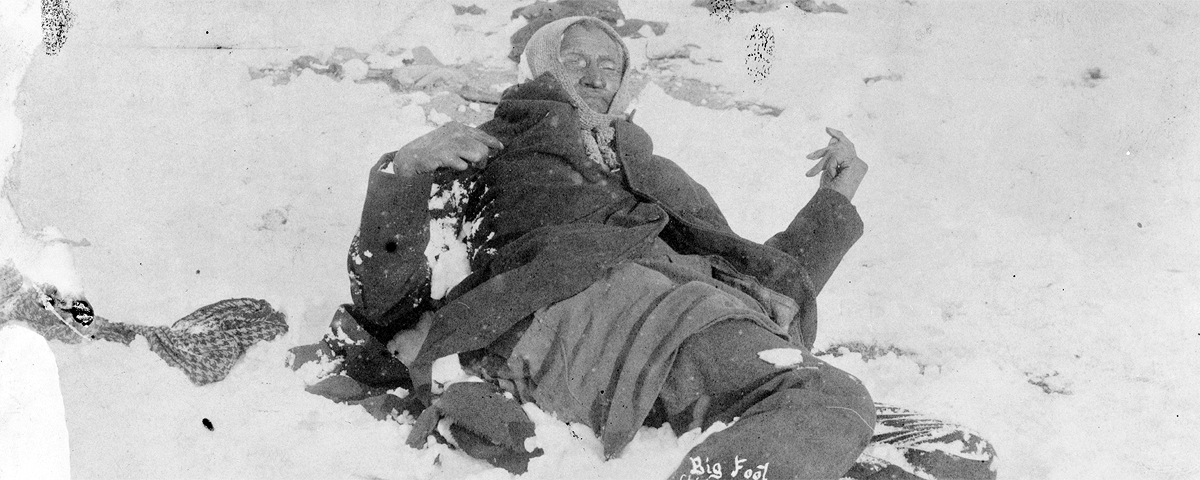In the December 2017 issue of Wild West we return to Wounded Knee, South Dakota, something thousands of Americans have done—in mind if not body—in the 127 years since the tragic Dec. 29, 1890, clash that ended with the slaughter of Lakota women, children and elders. In all 7th U.S. Cavalry soldiers under Colonel James Forsyth killed some 150 Indians (Lakota estimates range up to twice that many) from Minneconjou Chief Big Foot’s band while suffering 60 casualties (25 killed, 35 wounded). Forsyth, as John Koster writes in Wild West, fingered the Indians for firing the first shot and starting a fight neither side wanted. The soldiers gained the upper hand with the help of four Hotchkiss guns, which caught the panicked Indians in a deadly crossfire. The results didn’t sit well with Maj. Gen. Nelson Miles; six days after the carnage, he relieved Forsyth of command and ordered a court of inquiry. The court ultimately exonerated Forsyth for his actions, and 20 soldiers at Wounded Knee received the Medal of Honor. Many Americans have questioned the justice in that, and most people today view Wounded Knee as a massacre—at least the way it ended.
“Exactly what happened at Wounded Knee will probably never be known,” says Indian wars expert and Wild West special contributor Gregory Michno. “As in almost every historical event, eyewitness testimony can vary 180 degrees. Most likely, whatever conceptions the reader brings to the examination will, because of confirmation bias, be the same conceptions he emerges with. We see what we already believe. Wounded Knee is generally depicted as a massacre—for very good reasons. But there was no premeditation. Untrained troops, fear, poor tactical distribution and control, and an unanticipated flash point quickly threw a manageable situation into chaos.”
Whether we call Wounded Knee a battle, a massacre or a mixture of both, one thing seems certain—Big Foot himself was not to blame for what transpired. In his 2016 book The Earth Is Weeping Peter Cozzens writes that while Big Foot initially embraced the Ghost Dance (the “religion” that triggered trouble on the reservation), he was a peaceable man and an intratribal mediator who sought balance between old and new traditions. What’s more, at Wounded Knee he was prostrated by pneumonia. “Nothing about Big Foot suggested malice,” Cozzens writes. “Even if he were so inclined, Big Foot was too sick to foment unrest.” Regardless, Miles regarded him as defiant and cunning and suggested his band be disarmed and kept under close guard.
Riding in a farmer’s wagon, the ailing chief had been bound from his remote cabin for the Pine Ridge Agency some 50 miles away. With him were his Minneconjous and some of the late Sitting Bull’s Hunkpapa followers. Big Foot was neither looking for a fight nor hiding from the soldiers. The soldiers and warriors met up on December 28 and that evening peacefully bivouacked on the west bank of Wounded Knee Creek. Forsyth’s orders were to disarm Big Foot’s band, prevent the escape of any Indians and “if they fought, to destroy them.” Soldiers began disarming the band sometime after 8 the next morning, and it did not go well. The Indians kept their good rifles hidden, and by most accounts it was a warrior (said to be deaf) who fired the first shot, about the time a chanting medicine man threw a handful of dirt in the air. Bloody horror followed (see details in Cozzens’ book and Jerome A. Greene’s excellent American Carnage: Wounded Knee, 1890). Miles wrote to his wife that Wounded Knee was a “most abominable, criminal military blunder and a horrible massacre of women and children.” But as Cozzens points out, Miles—“apparently unaware that his wrongheaded orders had precipitated the bloodbath”—should share in any blame handed out. As for Big Foot, who was photographed in frozen death on the field of battle turned massacre—may he rest in peace.
Wild West editor Gregory Lalire wrote the 2014 historical novel Captured: From the Frontier Diary of Infant Danny Duly. His article about baseball in the frontier West won a 2015 Stirrup Award for best article in Roundup, the membership magazine of Western Writers of America.





